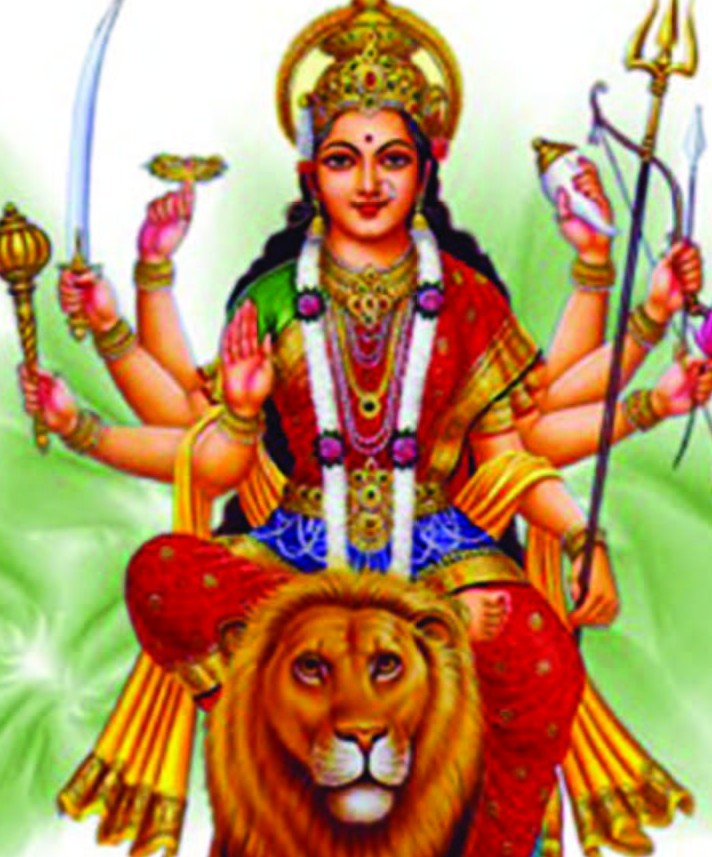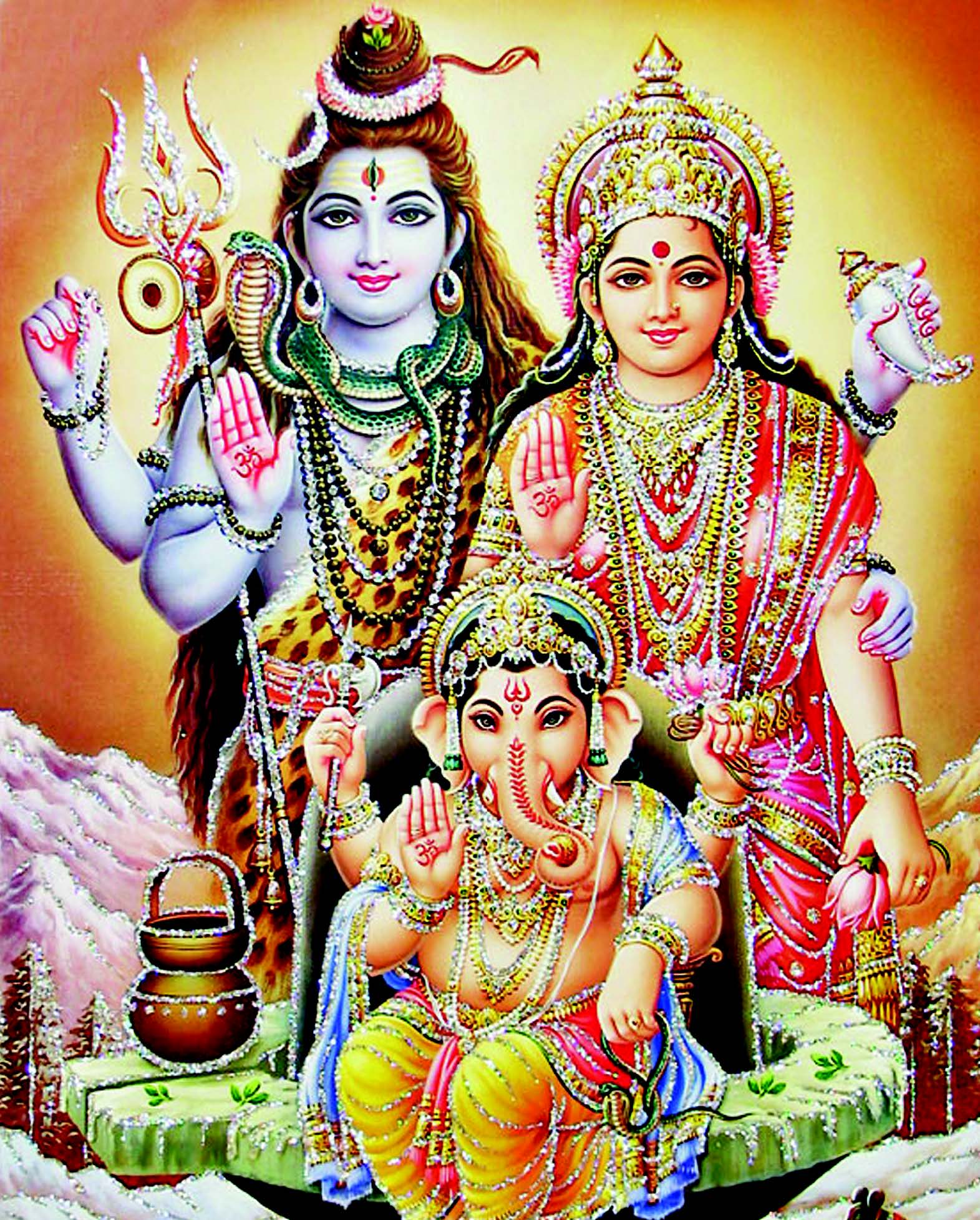
Chaitra Navratri or Vasant Navratri signifies the start of the Indian or the Hindu new year i.e. the 1st day or Prathama tithi of the Chitra Sudi, every year.
Navratri, the festival of nine nights is dedicated to Goddess Durga and her nine forms. The nine days have great religious significance as Goddess Durga, the divine mother, had destroyed the evil force (in the form of the demon Mahisashura) during this period.
The festival is celebrated with true devotion and purity all over the country.
People from various sections of the society irrespective of caste and creed celebrate this festival by visiting temples and offering pujas at the Mother’s feet.
In some places special puja samarohas are also held by setting the images of Mother Durga on beautifully decorated pandals.
Temples dedicated to Shakti also make arrangement for pujas and bratas to mark these nine days as true symbols of devotion and adoration towards the divine mother.
As this Navratra coincides with Ram Navami, it also referred as Ram Navratri. The dates are from March 21, 2015 to March 28, 2015.
Vasant Navratri is observed in the Hindu month of Chaitra (March – April). It is believed that Goddess Durga was originally worshipped (Durga Puja) in the Chaitra month and was also referred as Basanti Puja. It was Lord Ram who changed the period of Durga Puja.
The Story of Vasanta Navaratri
In days long gone by, King Dooshibago was killed by a lion when he went out hunting. Preparations were made to crown the prince Sudarsana. But, King Yudhajit of Ujjain, the father of Queen Lilavati, and King Virasena of Kalinga, the father of Queen Manorama, were each desirous of securing the Kosala throne for their respective grandsons. They fought with each other. King Virasena was killed in the battle. Manorama fled to the forest with Prince Sudarsana and a eunuch. They took refuge in the hermitage of Rishi Bharadwaja.
The victor, King Yudhajit, thereupon crowned his grandson, Satrujit, at Ayodhya, the capital of Kosala. He then went out in search of Manorama and her son. The Rishi said that he would not give up those who had sought protection under him. Yudhajit became furious. He wanted to attack the Rishi. But, his minister told him about the truth of the Rishi’s statement. Yudhajit returned to his capital.
Fortune smiled on Prince Sudarsana. A hermit’s son came one day and called the eunuch by his Sanskrit name Kleeba. The prince caught the first syllable Kli and began to pronounce it as Kleem. This syllable happened to be a powerful, sacred Mantra. It is the Bija Akshara (root syllable) of the Divine Mother. The Prince obtained peace of mind and the Grace of the Divine Mother by the repeated utterance of this syllable. Devi appeared to him, blessed him and granted him divine weapons and an inexhaustible quiver. The emissaries of the king of Benares passed through the Ashram of the Rishi and, when they saw the noble prince Sudarsana, they recommended him to Princess Sashikala, the daughter of the king of Benares.
The ceremony at which the princess was to choose her spouse was arranged. Sashikala at once chose Sudarsana. They were duly wedded. King Yudhajit, who had been present at the function, began to fight with the king of Benares. Devis helped Sudarsana and his father-in-law. Yudhajit mocked Her, upon which Devi promptly reduced Yudhajit and his army to ashes.
Thus Sudarsana, with his wife and his father-in-law, praised Devi. She was highly pleased and ordered them to worship her with havan and other means during the Vasanta Navarathri. Then she disappeared.
Prince Sudarsana and Sashikala returned to the Ashram of Rishi Bharadwaja. The great Rishi blessed them and crowned Sudarsana as the king of Kosala. Sudarsana and Sashikala and the king of Benares implicitly carried out the commands of the Divine Mother and performed worship in a splendid manner during the Vasanta Navarathri.
Sudarsana’s descendants Sri Rama and Lakshmana also performed worship of Devi during the Sharad Navarathri and were blessed with Her assistance in the recovery of Sita.
According to the Krittibas Ramayana, Rama invoked the goddess Durga in his epic battle against Ravana. Although Goddess Durga was traditionally worshipped in the late spring, due to contingencies of battle, Lord Rama had to invoke her in the form of astam (eighth) Mahavidya (Maa Bagla) in the autumn and thus is known as akaal bodhan (invoking out of scheduled time). This autumnal ritual was different from the conventional Durga Puja, which is usually celebrated in the springtime. So, this Puja is also known as ‘akal-bodhan’ or out-of-season (‘akal’) worship (‘bodhan’). This Rama’s date for the Navaratri puja has now gained ascendancy and culminates with Dusherra in North India on the following day.
Why Celebrate Vasanta Navaratri?
It is the duty of the devout Hindus to worship the Devi (Mother Goddess) for both material and spiritual welfare during the Vasanta Navaratri and follow the noble example set by Sudarsana and Sri Rama. He cannot achieve anything without the Divine Mother?s blessings. So, sing Her praise and repeat Her Mantra and Name. Meditate on Her form. Pray and obtain Her eternal Grace and blessings. May the Divine Mother bless you with all divine wealth!”
Dates of Chaitra Navratri in 2015
- Vasant Navratri Day 1 – Ghatsthapana – 21 March 2015
- Vasant Navratri Day 2 – Sindhara Dooj, Dwitiya – 22 March 2015
- Vasant Navratri Day 3 – Gaur Teej, Saubhagya Teej, Tritiya – 23 March 2015
- Vasant Navratri Day 4 – Varadvinayak Chaturthi – 24 March 2015
- Vasant Navratri Day 5 – Sri Laxmi Panchami Vrat, Naag Vrat Pujan – 25 March 2015
- Vasant Navratri Day 6 – Skand Shashthi, Yamuna Jayanti – 26 March 2015
- Vasant Navratri Day 7 – Mahasaptami Vrat, Chaiti Chat, Vijaya Saptami – 27 March 2015
- Vasant Navratri Day 8 – Sri Durga Mahaashtami, Annapurna Ashtami – 28 March 2015
- Vasant Navratri Day 9 – Vasant Navaratri ends, Ram Navami – 29 March 2015
Celebration of all Navratri in a year is almost same. There is a special event followed by Hindus during Vasant Navaratri and Sharad Navaratri. It is of feeding little girls, below the age of nine, considering them the symbol of Goddess Durga and these girls are known as ‘Kanjaks’ in Haryana and Punjab and ”Kanya” at many other places. This event is performed on the eighth day and some people also perform it on ninth day. Apart from food, people also offer money and many other forms of gifts. Chaitra Navratri in 2015, like every year, is going to be celebrated during Basant Ritu (spring season), which is the time of March – April. That is why this festival is also called Vasant Navratri or Basant Navratri.
This page is sponsored by ARISH SAHANI New York Life Insurance Agent
sahani108@gmail.com / 718 271 0453





Be the first to comment